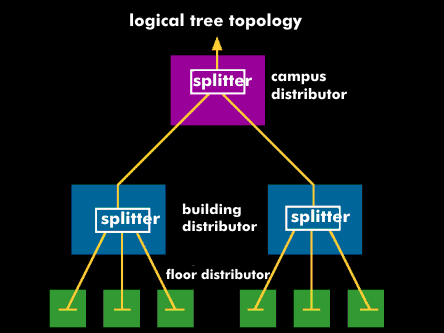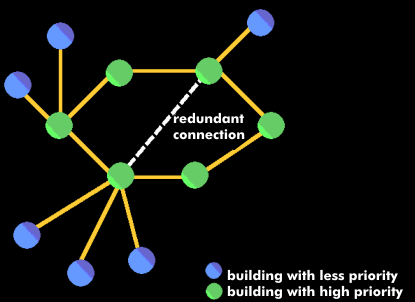primary cabling
Primary cabling, also known as site cabling, is a company-wide site cabling system for connecting the individual buildings on a campus. In this process, the building distributors are connected to the site distributor via the primary cable.
According to the specifications of the ISO/IEC11801 and EN 50173 cabling standards for universal cabling, the maximum extension of the primary area can be 3 km. This results from the maximum distance between the site and building distributors, which is limited to 1,500 m. In the primary area, fiber optic cables in single- mode and multimode fibers are generally used. SC connectors are recommended as connection elements for new installations; existing ST connectors are also provided.
Primary cabling can be in ring or star topology. Star-shaped cabling involves cabling from a concentration point. Since star-shaped cabling is susceptible to faults in the central concentrator and also to route failure, it is recommended to set up a double or a combined topology. Interesting alternatives to the single star topology are the double star, the double ring or a combination of ring and star topology.
In such a concept, high- priority buildings are connected by a ring, while those with low priority are connected in a star configuration to a high-priority building. With this combined topology, the entire primary area can continue to be operated via redundancy paths even if a star connection fails or if the ring is interrupted.


